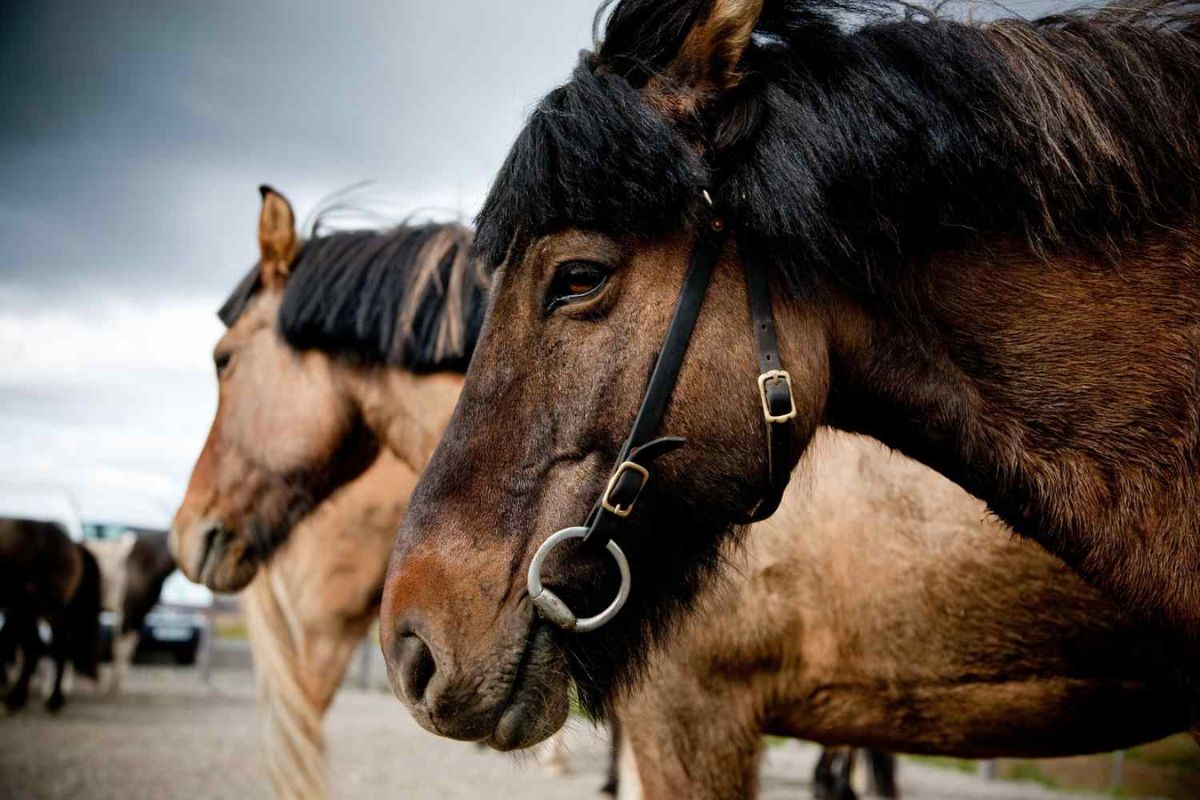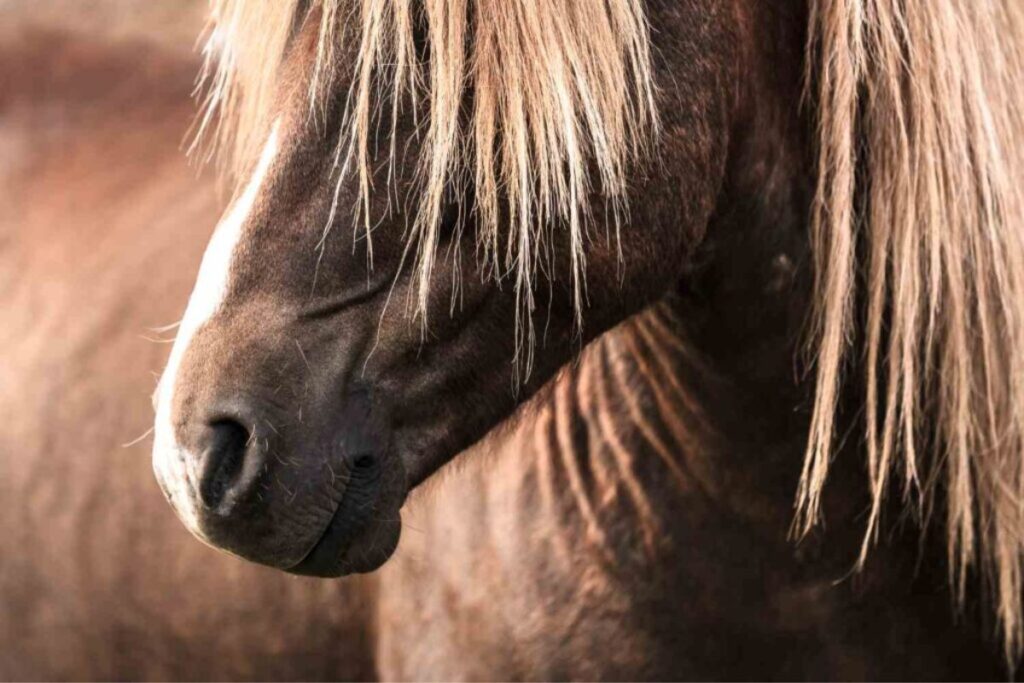Menu

Equestrian sport organisations are committed to ensuring the welfare of competing horses, with most organisations viewing horse welfare as their highest priority. Nevertheless, we often overlook the small signs of discomfort that horses display during competitions.
This was what Janne Winther conveyed during a presentation at the 18th Equitation Science conference, held this year at Hartpury University in England. Janne Winther recently conducted a study, along with her colleagues from Aarhus University, on conflict behaviour in Icelandic horses competing at the highest level in Iceland. Conflict behaviour, such as mouth opening, sudden head movements, undesired changes in gaits, and tail swishing, may indicate signs of frustration.
Also check out: The Icelandic horse: A versatile and friendly legend
In a previous study of 150 dressage and jumping horses participating in an international competition, a Polish research group observed a high incidence of conflict behaviour. On average, the researchers observed conflict behaviour 19 times per minute for dressage horses and 14 times per minute for jumping horses. "We know very little about conflict behaviour in Icelandic horses, and no similar studies have been conducted for Icelandic horses at the elite level to date," says Janne Winther Christensen. Therefore, the researchers looked at conflict behaviour previously described in warmblood horses. They also examined if there were any behavioural traits in Icelandic horses that had not been described in warmblood horses before.
Janne Winther explains how a competition for Icelandic horses takes place: the tournament is held on a large oval track, with judges in the centre awarding points for the performances in the various gaits. Everything happens very quickly and at high speed, and it can be difficult for judges and observers to notice the subtle behavioural signs during a competition, she says.
Janne Winther and her colleagues used video recordings for their study. Video can be played back in slow motion, and by viewing the recordings at 0.25 speed, it became possible for the researchers to notice the detailed signs of conflict in each horse.
The research team chose to look at two different competitions, where they had access to online video recordings of Icelandic horses competing at the highest level in Iceland. These recordings are online and freely available to all.

Also check out: Help your Icelandic horse to a summer without eczema
The first video was of a five-gait competition with 25 horses, which were shown in walk, trot, canter, tölt, and pace. The second video was about a T2 competition, where 24 horses competed in tölt, the unique gait for Icelandic horses, under short and long reins respectively. In the slow-motion video footage, it was easy to see when the horse opened its mouth, defined as a clear separation of the teeth in the upper and lower jaws, which was the most frequently observed behaviour among all sport horses.
During the five-gait competition, opening of the mouth was more frequent in pace and tölt, compared to walk, trot and canter. There seemed to be a correlation: the faster the speed, the more often the horse had an open mouth.
During the T2 competition, the horses were shown in tölt, in short reins and loose reins respectively. Again, a significant difference could be seen. The researchers observed a high occurrence of open mouth in tölt under short reins, which may indicate a tension in the rein. The researchers also noted changes in the horses' head position, tail swishing and some deviant changes in the gaits, but the frequency was lower than it was for the occurrence of open mouth.
Half of the horses showed tensions around the upper lip. This could be seen as the horses' upper lip changed and became more elongated and tense. The researchers observed this behaviour in 12 out of the 24 participating horses in the T2 competition, but only in the slow tölt, where the horse was ridden with short reins. Open mouth and elongated lip appear to be common behavioural expressions in Icelandic horses competing at the elite level. There seems to be quite a bit of tension in the mouths of these horses. This behaviour has not been previously described in warmblood horses.
"The welfare of competition horses is of crucial importance for the continued acceptance of the sport by the public," says Janne Winther. She believes that further studies are needed to uncover the significance of this behaviour. "The question is whether the conflict behaviour is a reaction to tension in the rein, or whether it is a genuine expression of discomfort," she says. More research is needed into the correlation between conflict behaviour and physiological stress parameters, but it is always important to be aware of the behaviour that the horses display. As a rule, we need to be aware that conflict behaviour may be a sign of potential discomfort in the horse," concludes Janne Winther.
Also check out: Is it time for the saddler? Check if your saddle fits your horse